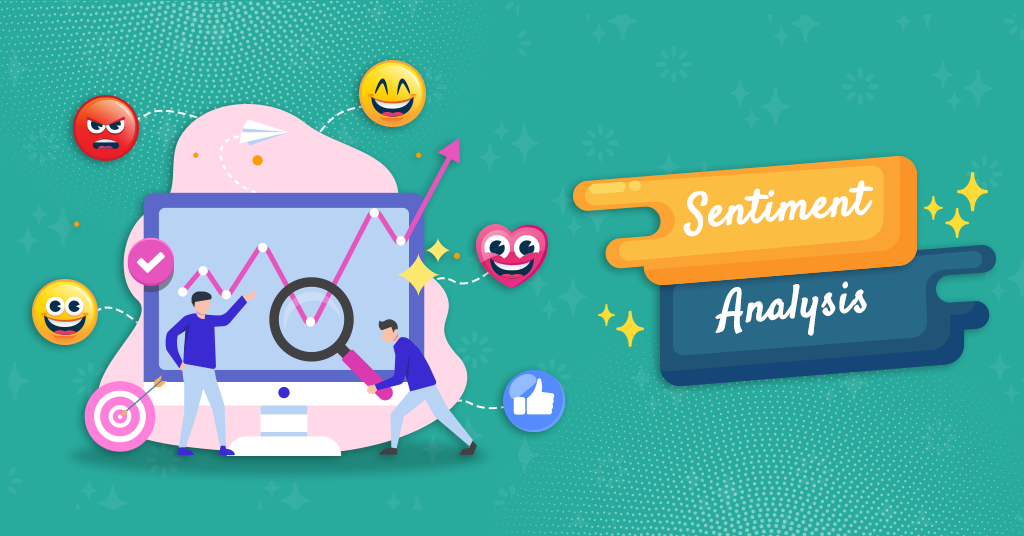In today’s digital age, understanding customer sentiments is crucial for businesses to thrive. Sentiment analysis software has emerged as a powerful tool in deciphering and analyzing customer opinions across various online platforms. From social media to customer reviews, sentiment analysis software helps businesses gain valuable insights into consumer perceptions, allowing them to make informed decisions and enhance their brand reputation.
Introduction to Sentiment Analysis Software

Sentiment analysis, also known as opinion mining, is the process of identifying and categorizing the sentiment expressed in a piece of text. Whether it’s positive, negative, or neutral, sentiment analysis software utilizes natural language processing (NLP) and machine learning algorithms to analyze vast amounts of textual data.
Businesses leverage sentiment analysis software to gain a deeper understanding of customer feedback, market trends, and brand reputation. By accurately gauging public opinion, organizations can tailor their marketing strategies, product development efforts, and customer service initiatives to meet the needs and preferences of their target audience.
Types of Sentiment Analysis Software
There are primarily three types of sentiment analysis tool:
1. Rule-based sentiment analysis:
Rule-based systems rely on predefined rules and lexicons to determine sentiment. While they offer simplicity and transparency, they may lack accuracy when dealing with nuanced language and context.
2. Automatic sentiment analysis:
Automatic sentiment analysis employs machine learning algorithms to analyze text and classify sentiment. These systems continuously learn and improve from data, offering greater accuracy and adaptability.
3. Hybrid sentiment analysis:
Hybrid approaches combine rule-based and automatic techniques to leverage the strengths of both methods. This results in more robust sentiment analysis models capable of handling a wide range of textual data.
Key Features of Sentiment Analysis Software
When evaluating sentiment analysis tool, several key features are essential:
– Sentiment detection accuracy:
Accurate sentiment detection ensures reliable insights into customer opinions and emotions.
– Multilingual support:
Support for multiple languages enables businesses to analyze sentiment across diverse markets and demographics.
– Real-time analysis capabilities:
Real-time analysis allows organizations to monitor and respond promptly to evolving sentiments and trends.
– Customization options:
Customizable parameters and settings enable businesses to tailor sentiment analysis models to their specific needs and industry requirements.
Benefits of Using Sentiment Analysis Software
The benefits of employing sentiment analysis tool are manifold:
– Understanding customer opinions:
Sentiment analysis software provides valuable insights into customer preferences, pain points, and expectations, helping businesses enhance their products and services accordingly.
– Improving brand reputation:
By monitoring online sentiment, organizations can identify and address potential issues before they escalate, safeguarding their brand reputation and fostering customer loyalty.
– Making data-driven decisions:
Data obtained from sentiment analysis tool empowers businesses to make informed decisions across various departments, from marketing and sales to product development and customer support.
Popular Sentiment Analysis Software Solutions
Numerous sentiment analysis software solutions are available in the market today, catering to diverse business needs and requirements. Some of the leading options include:
- [AIM Insights]: Offers advanced NLP algorithms for accurate sentiment classification and trend analysis.
- [Brandwatch]: Known for its robust analytics dashboard and real-time sentiment monitoring capabilities.
- [Brand24]: Provides customizable sentiment analysis models tailored to specific industries and use cases.
How to Choose the Right Sentiment Analysis Software
Selecting the appropriate sentiment analysis tool involves considering various factors:
– Considerations for selection:
Assess the specific needs and objectives of your organization, such as the volume of data to be analyzed, integration requirements, and budget constraints.
– Factors to evaluate:
Evaluate the software’s accuracy, scalability, ease of use, customer support, and compatibility with existing systems.
Challenges and Limitations
Despite its advantages, sentiment analysis software faces certain challenges and limitations:
– Common challenges faced:
Dealing with sarcasm, irony, and slang poses challenges to accurate sentiment analysis.
– Limitations of sentiment analysis software:
Bias in data, cultural nuances, and language complexities may affect the reliability of sentiment analysis results.
Future Trends
The future of sentiment analysis tool looks promising, with advancements in technology driving innovation and growth:
– Advancements in technology:
AI-driven sentiment analysis models will become more sophisticated, capable of understanding context and emotions with greater accuracy.
– Predictions for the future:
Sentiment analysis will increasingly integrate with other AI technologies, such as chatbots and virtual assistants, to deliver personalized customer experiences.
Best Practices for Implementing Sentiment Analysis Software
To maximize the benefits of sentiment analysis tool, organizations should adhere to best practices:
– Tips for successful implementation:
Define clear objectives, establish KPIs, and train employees on utilizing sentiment analysis insights effectively.
– Strategies for maximizing benefits:
Integrate sentiment analysis into existing workflows, collaborate across departments, and continuously evaluate and refine analysis models.
Ethical Considerations
As with any technology, sentiment analysis tool raises ethical concerns that businesses must address:
– Privacy concerns:
Organizations must prioritize data privacy and security when collecting and analyzing customer feedback.
– Bias in sentiment analysis:
Guard against algorithmic bias by regularly auditing and refining sentiment analysis models to ensure fairness and accuracy.
Conclusion
Sentiment analysis software has emerged as a vital tool for businesses seeking to gain actionable insights from customer feedback and online conversations. By leveraging advanced NLP and machine learning algorithms, organizations can decipher sentiments, monitor brand perception, and make data-driven decisions to enhance customer satisfaction and drive business success.
Ready to harness the power of sentiment analysis for your business? Request a demo from AIM Technologies today and discover how our cutting-edge solutions can transform your approach to customer insights and engagement.
FAQs
What is sentiment analysis tool?
- Sentiment analysis software is a tool that uses natural language processing (NLP) and machine learning algorithms to analyze and categorize the sentiment expressed in textual data.
How does sentiment analysis tool work?
- Sentiment analysis tool analyzes text by identifying keywords, context, and linguistic patterns to determine whether the sentiment expressed is positive, negative, or neutral.
What are the benefits of using sentiment analysis tool?
- Some benefits of sentiment analysis software include understanding customer opinions, improving brand reputation, and making data-driven decisions.
What are the challenges of sentiment analysis tool?
- Challenges include dealing with sarcasm, irony, and slang, as well as addressing bias in data and cultural nuances.
How can businesses choose the right sentiment analysis tool?
- Businesses should consider factors such as accuracy, scalability, ease of use, and compatibility with existing systems when selecting sentiment analysis tool.




